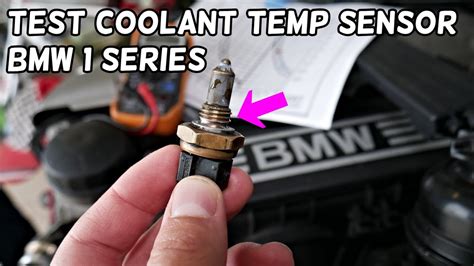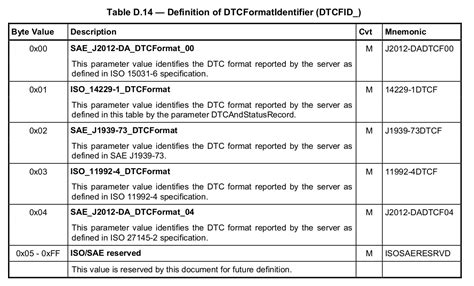Dtcs Meaning

In the world of automotive technology, acronyms and abbreviations are common, and one such acronym that plays a crucial role in modern vehicle diagnostics is DTCs, which stands for Diagnostic Trouble Codes. These codes are the language of vehicle diagnostics, providing invaluable insights into the health and performance of vehicles. As technology advances and vehicles become more complex, understanding DTCs has become essential for mechanics, engineers, and even vehicle owners seeking to troubleshoot issues.
This article delves deep into the world of DTCs, exploring their origins, functions, and significance in the automotive industry. We'll unravel the mystery behind these codes, examine their various types, and discuss their impact on vehicle maintenance and repair.
Understanding Diagnostic Trouble Codes (DTCs)

Diagnostic Trouble Codes, or DTCs, are alphanumeric codes generated by a vehicle’s onboard diagnostic system (OBD) to indicate potential issues or malfunctions within the vehicle. These codes are designed to help mechanics and technicians identify and diagnose problems more efficiently, saving time and resources in the diagnostic process.
The concept of DTCs emerged with the introduction of onboard diagnostics in vehicles, which began with the On-Board Diagnostics I (OBD-I) system in the 1980s. Over time, the system evolved, leading to the more advanced OBD-II system, which is now standard in most vehicles worldwide. With the advancement of technology, DTCs have become increasingly sophisticated, providing more detailed and specific information about vehicle faults.
DTCs are triggered when the vehicle's onboard computer, often referred to as the Engine Control Unit (ECU), detects a problem or a parameter that falls outside of its predefined limits. The ECU then generates a specific code, which is stored in the vehicle's memory and can be retrieved using diagnostic tools.
Types of DTCs
DTCs can be categorized into several types, each indicating a different aspect of vehicle performance. The most common types include:
- Engine-Related DTCs: These codes pertain to issues with the engine's operation, such as misfires, fuel injection problems, or emission control malfunctions.
- Transmission-Related DTCs: Focused on the vehicle's transmission system, these codes indicate problems with gear shifts, clutch operation, or transmission fluid levels.
- Emission Control DTCs: As the name suggests, these codes are related to the vehicle's emission control system, alerting to potential issues with catalytic converters, oxygen sensors, or exhaust gas recirculation (EGR) systems.
- ABS/Brake-Related DTCs: DTCs under this category are associated with the vehicle's anti-lock braking system (ABS) and can indicate problems with brake sensors, hydraulic systems, or ABS control modules.
- Airbag/Safety System DTCs: These codes are critical, as they relate to the vehicle's safety systems, including airbags, seatbelt pretensioners, and collision sensors.
- Body Control Module (BCM) DTCs: BCM DTCs are associated with the vehicle's body control system, which manages various electronic components like power windows, door locks, and interior lighting.
Each type of DTC provides specific information about the affected system, helping technicians pinpoint the root cause of the issue more accurately.
| DTC Category | Description |
|---|---|
| Engine-Related | Covers engine performance, fuel injection, and emission control issues. |
| Transmission | Relates to gear shifting, clutch operation, and transmission fluid problems. |
| Emission Control | Alerts to catalytic converter, oxygen sensor, and EGR system malfunctions. |
| ABS/Brake | Indicates problems with ABS sensors, hydraulic systems, and control modules. |
| Airbag/Safety | Critical codes related to airbags, seatbelt pretensioners, and collision sensors. |
| Body Control Module (BCM) | Associated with power windows, door locks, and interior lighting systems. |

The Process of Retrieving and Interpreting DTCs

Retrieving and interpreting DTCs is a critical step in vehicle diagnostics. It involves using specialized diagnostic tools, often referred to as code readers or scan tools, to communicate with the vehicle’s onboard computer.
Retrieving DTCs
To retrieve DTCs, a technician or vehicle owner connects the diagnostic tool to the vehicle’s OBD port, typically located under the dashboard. Once connected, the tool communicates with the ECU, retrieving any stored DTCs. Modern diagnostic tools can provide real-time data, allowing technicians to monitor vehicle parameters and identify issues as they occur.
Interpreting DTCs
Interpreting DTCs requires a combination of technical knowledge and experience. Each DTC is unique and provides specific information about the fault. For instance, a code like P0300 indicates a random or multiple cylinder misfire, while B1234 might relate to a problem with the body control module.
To make sense of these codes, technicians refer to diagnostic charts, online databases, and manufacturer-specific resources. These resources provide detailed explanations of each code, helping technicians understand the nature of the problem and the potential causes.
For example, if a technician retrieves a code related to the oxygen sensor (e.g., P0135), they can refer to diagnostic charts to understand that this code suggests a malfunction in the heater circuit of the downstream oxygen sensor. This information guides the technician in their next steps, which could involve inspecting the sensor, checking for wiring issues, or testing the sensor's performance.
The Impact of DTCs on Vehicle Maintenance and Repair
The introduction of DTCs has revolutionized vehicle maintenance and repair, making diagnostics more efficient and accurate. Before the widespread use of DTCs, diagnosing vehicle issues was often a time-consuming and guesswork-laden process.
Benefits of DTCs
- Time Efficiency: DTCs provide immediate insight into potential issues, allowing mechanics to focus their diagnostic efforts on specific areas of the vehicle, reducing diagnostic time.
- Accurate Diagnostics: With DTCs, mechanics can pinpoint the root cause of a problem more accurately, leading to more effective repairs and reducing the likelihood of recurring issues.
- Improved Safety: DTCs related to critical systems, such as airbags and brakes, ensure that potential safety hazards are promptly identified and addressed.
- Enhanced Vehicle Performance: By addressing issues indicated by DTCs, vehicle owners can maintain optimal performance, improve fuel efficiency, and extend the lifespan of their vehicles.
Limitations and Considerations
While DTCs are a powerful diagnostic tool, they are not without limitations. Sometimes, DTCs may not provide a definitive diagnosis, and further testing and analysis are required. Additionally, DTCs can be triggered by a range of factors, including sensor malfunctions, wiring issues, or even temporary environmental conditions.
For instance, a DTC related to the mass airflow sensor (e.g., P0101) could indicate a faulty sensor or wiring issue. However, it could also be triggered by a clogged air filter or even extreme weather conditions. Therefore, technicians must interpret DTCs within the context of the vehicle's overall performance and conduct further tests to confirm the root cause.
Future Trends and Advancements in Diagnostic Trouble Codes
As automotive technology continues to advance, the role and sophistication of DTCs are expected to evolve as well. Here are some potential future trends and advancements in the field of DTCs:
- Advanced Sensor Technology: With the development of more sophisticated sensors, DTCs are likely to provide even more detailed and precise information about vehicle performance and potential issues.
- Cloud-Based Diagnostics: The integration of cloud technology could allow for real-time data sharing between vehicles and diagnostic centers, enabling remote diagnostics and more efficient troubleshooting.
- Machine Learning and AI: Artificial intelligence and machine learning algorithms could be utilized to analyze DTCs and vehicle data, providing more accurate diagnostics and predictive maintenance.
- Standardization and Global Adoption : Efforts to standardize DTCs across different vehicle manufacturers and regions could enhance interoperability and make diagnostics more consistent worldwide.
These advancements promise to make vehicle diagnostics even more efficient, accurate, and accessible, benefiting both professional mechanics and vehicle owners alike.
Conclusion

Diagnostic Trouble Codes (DTCs) are a cornerstone of modern vehicle diagnostics, providing invaluable insights into the health and performance of vehicles. By understanding and effectively utilizing DTCs, mechanics and vehicle owners can ensure timely and accurate repairs, leading to safer, more efficient, and longer-lasting vehicles.
As technology continues to advance, the world of automotive diagnostics, including DTCs, will evolve, offering even more sophisticated tools and insights for maintaining our vehicles. Stay tuned for the exciting developments on the horizon, as we continue to unlock the secrets of vehicle diagnostics and keep our vehicles running smoothly.
How often should I retrieve DTCs from my vehicle?
+It’s recommended to retrieve DTCs regularly, especially if you notice any unusual behavior or performance issues with your vehicle. Retrieving DTCs during routine maintenance checks is also advisable to ensure your vehicle remains in optimal condition.
Can I retrieve and interpret DTCs myself, or do I need a professional mechanic?
+While it’s possible to retrieve DTCs with a code reader, interpreting the codes and diagnosing the issue accurately often requires professional expertise. Mechanics have the knowledge and experience to make sense of DTCs and perform the necessary repairs.
Are all DTCs the same across different vehicle makes and models?
+No, DTCs can vary slightly between different vehicle manufacturers and models. While there are standardized codes, manufacturers may use additional codes specific to their vehicles. It’s essential to refer to manufacturer-specific resources when interpreting DTCs.



